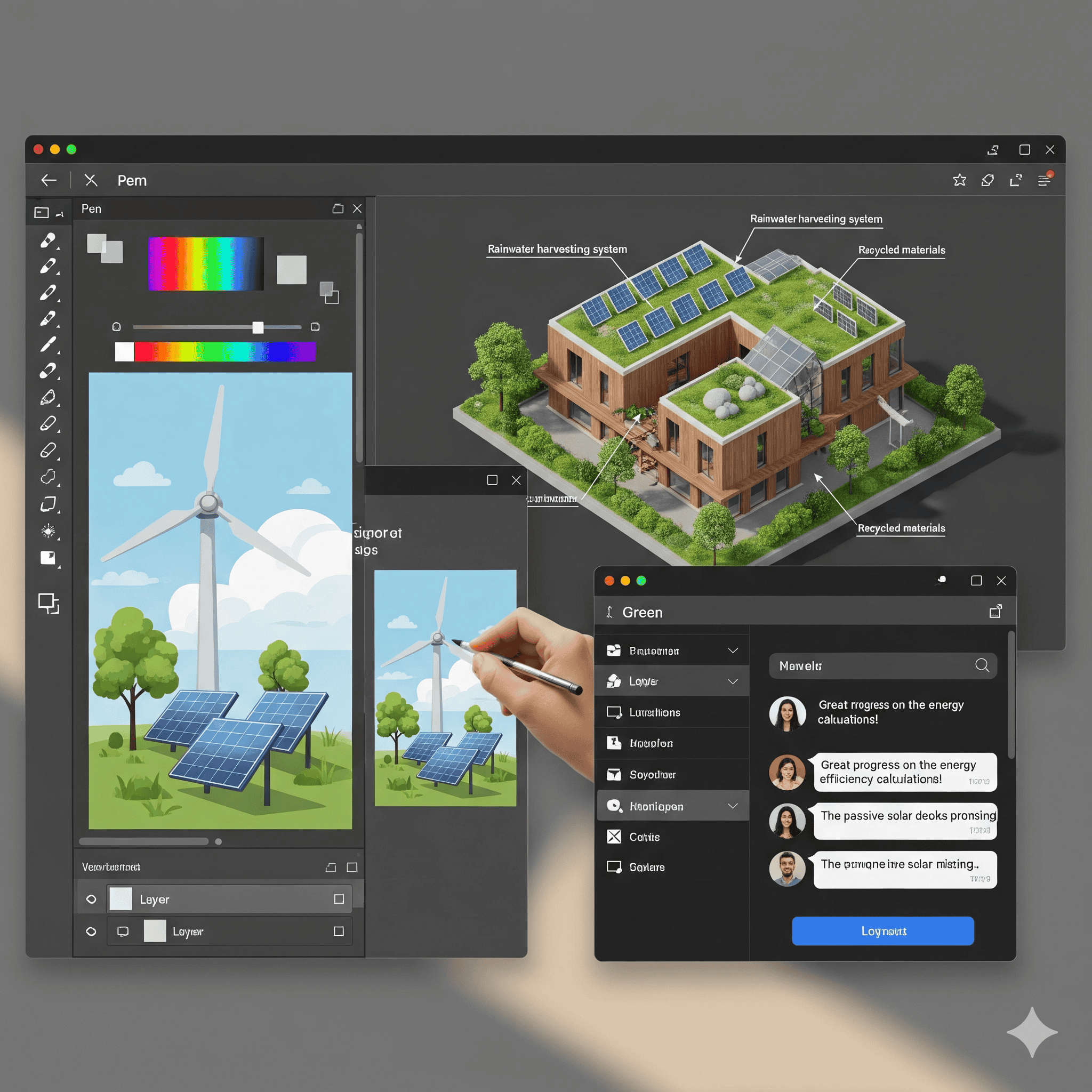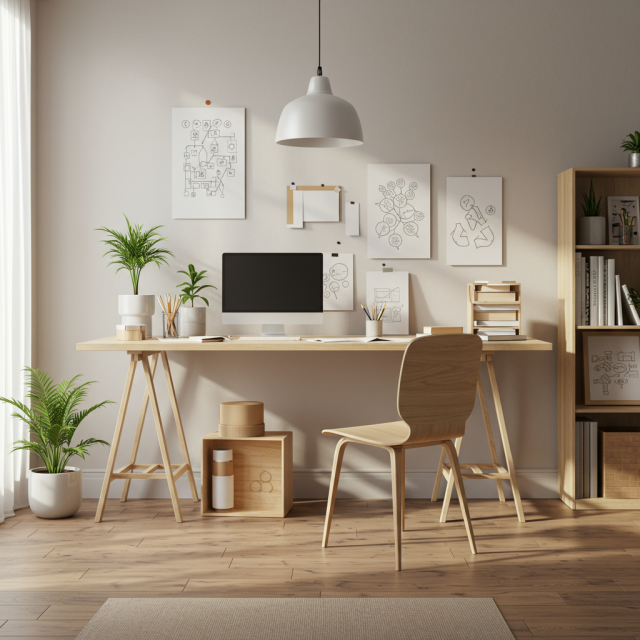In an era marked by heightened environmental awareness and a growing demand for responsible consumption, designers are called upon to rethink traditional workflows and embrace sustainable creative design. This comprehensive guide delves into the core principles, materials, tools, and real-world examples that showcase how to marry eco-friendly practices with compelling aesthetics. Whether you’re a graphic designer, product developer, or brand strategist, you’ll find actionable insights to reduce waste, minimize carbon footprint, and craft visuals that resonate with conscious consumers.
Why Sustainability Matters in Creative Design
Sustainability isn’t just a buzzword—it’s a necessity. Companies that prioritize eco-friendly design can lower production costs, reduce environmental impact, and enhance brand reputation. Studies show that consumers increasingly favor brands demonstrating genuine sustainability commitments. By integrating green practices into your creative process, you’ll meet evolving market expectations, attract ethically-minded clients, and pave the way for long-term resilience.
Core Principles of Sustainable Creative Design
- Reduce: Minimize resource consumption by adopting lean workflows and digital-first approaches.
- Reuse: Repurpose existing assets, templates, and materials to extend their lifecycle.
- Recycle: Select recyclable or compostable materials and design for disassembly.
- Renew: Incorporate renewable energy or carbon-offsetting initiatives into production.
- Rethink: Question assumptions at every stage to discover innovative, low-impact solutions.
Eco-Friendly Materials and Resources
Choosing the right materials is foundational. Here are some top picks:
- Recycled Paper and Cardboard: Post-consumer or FSC-certified stock reduces deforestation.
- Bioplastics: Derived from cornstarch or sugarcane, these offer compostable alternatives to petroleum-based plastics.
- Upcycled Fabrics: Old garments or textile waste can transform into unique canvases for print and pattern design.
- Low-VOC Inks and Paints: Water-based or soybean-based inks reduce toxic emissions and improve indoor air quality.
- Digital Assets: Virtual prototypes, AR mockups, and online galleries cut down on physical samples and shipping footprint.
Tools and Software That Support Green Design

Modern design software not only enhances creativity but can also drive sustainability:
- Vector-Based Illustration (Adobe Illustrator, Affinity Designer): Scalable artwork means fewer file exports and less waste in print runs.
- 3D Modeling and Rendering (Blender, Cinema 4D): Virtual prototypes enable clients to approve concepts without physical production.
- Collaborative Platforms (Figma, Miro): Cloud-based collaboration reduces back-and-forth printing and email exchanges.
- Life Cycle Assessment Tools (SimaPro, GaBi): Analyze environmental impacts from raw materials to end-of-life disposal.
- Print-on-Demand Services (Printful, Gelato): Produce only what’s sold, cutting inventory waste and returns.
Techniques for Low-Impact Visuals
Innovative approaches help you design with purpose while conserving resources:
- Minimalist Layouts: Focus on essential elements, reducing ink coverage and file complexity.
- Modular Systems: Create interchangeable components that adapt across mediums and campaigns.
- Monochrome and Duotone Palettes: Cutting back on color gradients can save energy in printing processes.
- Typographic Hierarchies: Well-defined type scales improve readability and reduce the need for heavy graphics.
- Intentional White Space: Breathing room not only looks elegant but also trims ink usage.
Integrating Sustainability into Your Workflow
Embrace these steps to embed eco-friendly thinking at every project phase:
- Briefing: Include sustainability goals in the creative brief. Ask clients about their environmental priorities.
- Research: Audit materials, suppliers, and production methods for green certifications.
- Concepting: Sketch digitally first. Explore modular templates and vector illustrations.
- Prototyping: Use virtual mockups or small batch runs to test materials and finishes.
- Production: Partner with local, certified vendors to shorten transportation routes.
- Evaluation: Track waste, energy use, and customer feedback to inform continuous improvement.
Case Studies: Brands Leading the Charge
Real-world examples bring theory to life. Consider these pioneers:
- Patagonia: Their “Don’t Buy This Jacket” campaign urged consumers to repair and reuse, showcasing responsible messaging layered over minimalist, high-impact visuals.
- IKEA: With flat-pack packaging and sustainable wood sourcing, their design language emphasizes simple icons, assembly guides, and recyclable materials.
- Biolite: Outdoor gear brand Biolite uses clear infographics to communicate energy-harvesting technology, printed on recycled brochures with soy-based inks.
- Loop: The zero-waste marketplace combines bold, modular branding with refillable packaging visuals that guide users through sustainable habits.
Measuring Impact and Iterating
To ensure your sustainable design efforts truly move the needle, adopt key performance indicators (KPIs):
- Material Savings: Track reductions in paper, plastic, and ink consumption year over year.
- Carbon Footprint: Use LCA tools to quantify CO₂ emissions across production and distribution.
- Client & Consumer Feedback: Survey satisfaction with eco-friendly design, and gather suggestions for improvement.
- Cost Analysis: Compare expenses before and after adopting green materials and workflows.
- Waste Diversion Rates: Measure how much waste is recycled, composted, or upcycled vs. landfilled.
Future Trends in Sustainable Creative Design
The intersection of technology and sustainability will unlock new possibilities:
- Biodesign: Living materials—like mycelium and algae-based composites—will replace plastics and foams.
- Augmented Reality Prototyping: Clients will preview installations and packaging in AR, eliminating physical mockups.
- Decentralized Production: 3D printing hubs and local fabrication labs will streamline supply chains and cut emissions.
- Circular Branding: Brand identities will include modular logos and packaging designed for multiple lifecycles.
- AI-Driven Material Discovery: Machine learning will accelerate the creation of novel, sustainable substrates and finishes.
Conclusion: Designing for a Greener Tomorrow
Sustainable creative design is more than an ethical choice—it’s a strategic advantage. By selecting eco-friendly materials, adopting green workflows, and leveraging future-focused tools, designers can craft visuals that inspire audiences and protect the planet. Start small by auditing your current practices, then iteratively implement the principles outlined in this guide. As you champion sustainability in your studio and with your clients, you’ll contribute to a healthier ecosystem—and forge designs that stand the test of time.
Ready to make your next project a beacon of eco-conscious creativity? Share your sustainable design wins and join the conversation on how we can innovate responsibly—one pixel, print, and prototype at a time.
Learn more about: How Generative AI Is Revolutionizing Creative Design: A Practical Guide









